June 2024 Part 1
Messerschmitt Bf-109E-7
Messerschmitt Bf-109F-4
Link to Website Index: 
Messerschmitt Bf-109E-7 “Emil”
7/JG26, Luftwaffe X Fliegerkorps
Gela, Sicily (and over Malta), March 1941 Flown by ObLt Joachim Muncheberg
Airfix 1/72 with Xtradecal set X72-162

Link to Website Index: 
This month I return to my Malta Air War project with two of the German aircraft that
wrought havoc with the RAF and Royal Navy defence of Malta during WW2. After Italian
forces in North Africa began to suffer extensive defeats at the hands of the British
& Commonwealth forces during 1940, Hitler despatched the Nazi Deutsche Afrika Korps
(DAK) to take over from the failing Italians. DAL logistic support came largely
by sea across the Mediterranean, which greatly increased the threat and nuisance
value of the island of Malta, that the Italians had so far been unable to suppress.
In response, the Luftwaffe High Command sent its battle hardened and well equipped
X Fliegerkorps to Sicily in January 1941, with over 255 aircraft to undertake intense
attacks on naval forces in and around Malta, and RAF/Fleet Air Arm airfields and
facilities on the island.
Most of the Luftwaffe attacks were undertaken by Ju-87 Stuka dive bombers and Ju-88
medium bombers., working alongside Italian Regia Aeronautica bombers and fighters.
A key target was the aircraft carrier HMS ILLUSTRIOUS which had played such a key
role in the successful Taranto raids that had left the Italian Navy trapped in port.
Initial massed attacks at sea managed to damage the ship badly and she made her
way to Malta for repairs. There she was effectively a sitting duck, docked in a
large floating dry dock. The ILLUSTRIOUS Blitz had begun.
Building the Airfix Bf109 kit
When you have built as many models as I have, one of the unintended consequences
can be that the latest whizz-bang wonder model from Airfix/Hasegawa/Special Hobby
etc can be a little underwhelming, regardless of how good it is. So often I find
that the subject is something I have built before, sometimes spending considerable
effort on converting an older kit to look more acceptable. Why then would I want
to build another one? Nevertheless, the phenomenon of "stash-building" is hard to
resist and I find my self drawn to buying one that remains unbuilt in the stash for
many years. 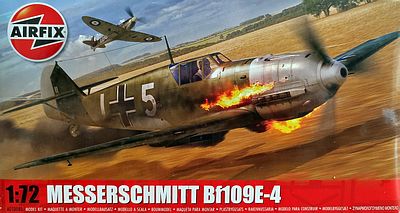
Thus it is that I have actually purchased quite a few of the superb "new Airfix"
kits, but haven't actually built many of them. The Messerschmitt Bf-109 is one of
those, a kit that looks nice in the box, but has not yet been unsealed and started
(actually I have 3). Part of the reason for this is that I am not actually a great
fan of German WW2 subjects - after all , they lost the war. However, my Malta Air
War inspired build project will inevitably include some German subjects, in German
markings (I have already done a few in Italian markings).
So on we go!
The Airfix Bf109 kit is readily available and has just been re-released this year
(2024) at a relatively low cost (mine was £8.99 from Jadlam). There are a vast number
of modern and excellent kits of the Bf-109 already on the market, but it is well
known that there are 2 types off aircraft kit that are guaranteed big sales numbers,
flying off the shelves, so to speak; the Bf-109 and the Spitfire, so it is no surprise
that Airfix are remaining in those 2 games with a variety of offerings. The 109
is, of course, so well known that a manufacturer enters the market with some risk,
lest the "rivet counters" manage to spot a flaw in a kit and condemn it as unbuildable.
Fortunately, the recent Airfix Bf-109 models seem to have escaped this (well done
the Airfix researchers!). And they really are superb little kits. I'm not sure
how suitable they are for beginners, since they are quite fiddly and delicate, but
mould design is superb, parts fit is near perfect. Detail is engraved, perhaps a
little too deeply, but after painting mine looked fine. I have 3 different versions
of the kit, the E-7/Trop, the later large engined G-6 and this E-4. A comparison
of the E-7 and E-4 shows that the former has an additional sprue, containing a fuel
tank, a bomb, the tropical air filter and two new spinners (without the hole for
the canon. As I will be doing this build as a Sicily-based aircraft flying over
Malta, I will be building the E-4 as an E-7, mainly by filling the spinner canon
hole, but also adding the underfuselage fuel tank from the E-7 kit. The E-4 instructions
do not show the cockpit armour plate being fitted (the E-7 ones do), but it is there
on the sprue, so will be used.
The kit includes a rudimentary representation of the DB-601A engine beneath the cowling.
This is not intended to be displayed, but does convincingly fill the gaps that can
be seen around the cowling air intakes/exhausts. The dropped flaps are also a very
nice touch (since 109s were seldom seen on the ground with their flaps up).
Colours are mostly Humbrol-based, with RLM02 (Humbrol 240) and RLM 71 (H242) on the
top surface, with an RLM 70 (H241), RLM71 (H242) and RLM 02 (H240) mottle on the
sides, over an RLM65 (Revell) base.
Many of the X Fliegerkorps aircraft operated out of Gela in southern Sicily. A large
airfield just in from the coast, it saw heavy fighting during the Allied invasion
of Sicily and its capture was a key objective for the initial phase of the invasion.
The photos below show JG26 aircraft at Gela.
To escort the bombers to their targets, the Luftwaffe deployed 7/JG26, with its Messerschmitt
Bf-109E-7 fighters. Led by Oberleutnant Joachim Müncheberg, 7/JG26 pilots were experienced,
confident, and well equipped. The ad-hoc RAF forces of obsolete Gloster Gladiators
and tired Hawker Hurricanes were totally outclassed. In 4 months, 7/JG26 claimed
42 victories, 20 of them credited to Müncheberg himself. Loses were outnumbering
newly supplied aircraft, including all of the Vickers Wellingtons that had arrived
to disrupt Axis convoys to North Africa. Typically, there were several raids each
day, with more than 107 attacks in February and 105 in March. As well as the bombers,
Bf 109 fighters strafed any signs of movement on the ground.
The situation looked glum indeed, but the defenders and population of Malta persevered,
with the capital Valetta becoming the most bombed place on the planet. By April
1941, German forces were drawn down to fight in the Balkans and Russia, easing Malta’s
risk of invasion but beginning the long siege of the island that would last until
late 1942.
The Bf-109 was one of the most important Nazi aircraft of WW2, fighting on all fronts
and holding the record for the most aircraft shot down . The 109-E or “Emil” model
was introduced just before the invasion of Russia and fought during the Battle of
Britain. The E-7 introduced plumbing to allow an auxiliary fuel tank to be carried
beneath the fuselage (an later a single bomb too). Although generally viewed as
an equivalent of the Spitfire, it was less manoeuvrable, but had a higher ceiling.
As the 109’s war moved more to air to air combat rather than ground support, the
central canon that fired through the engine and propeller hub was generally removed
with the resulting hole in the spinner filled.



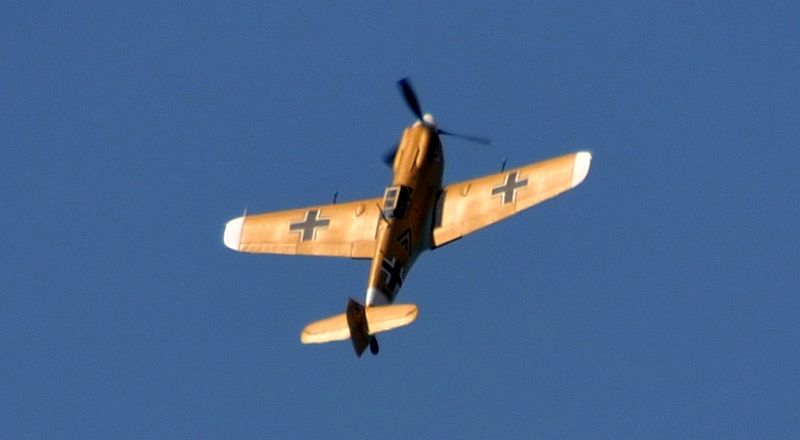
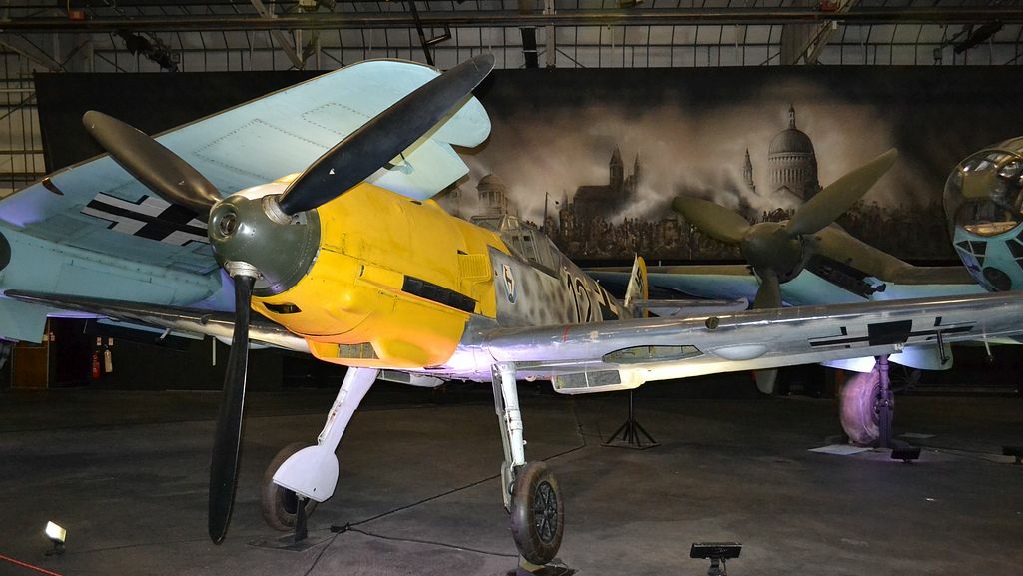
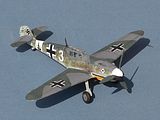
The Real Thing: There are relatively few early Bf-109s in existence here in the
UK, with the only one I am aware of at the RAF Museum in Hendon (bottom picture).
However, Spanish “Buchons”, a licence built 109 with a Rolls Royce Merlin engines
are more common and several can be seen flying at UK air displays.
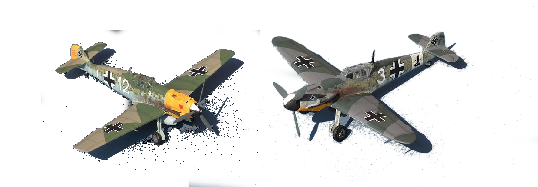
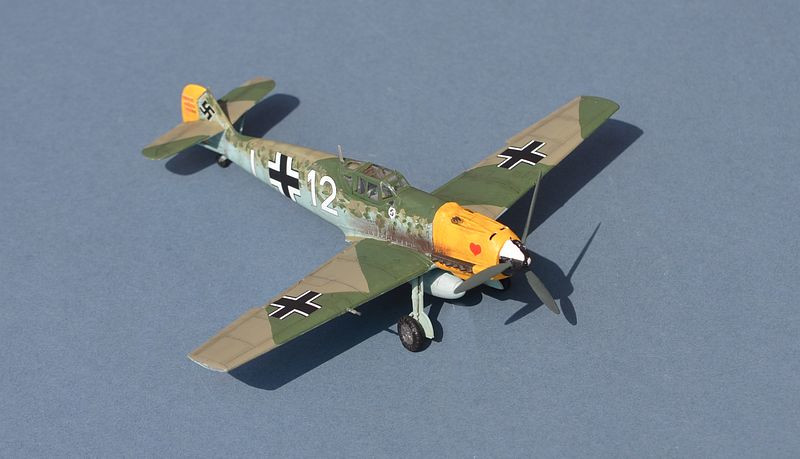
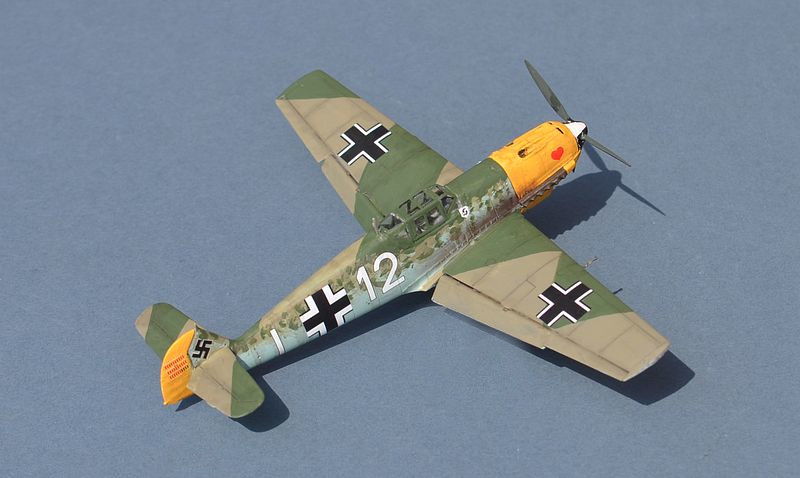

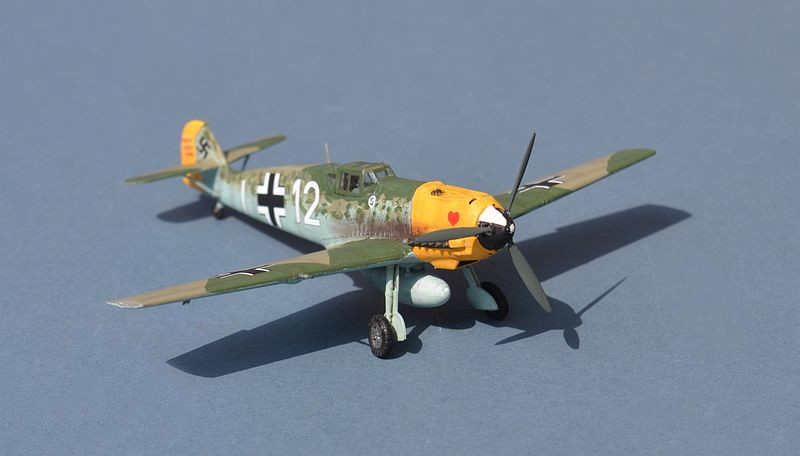
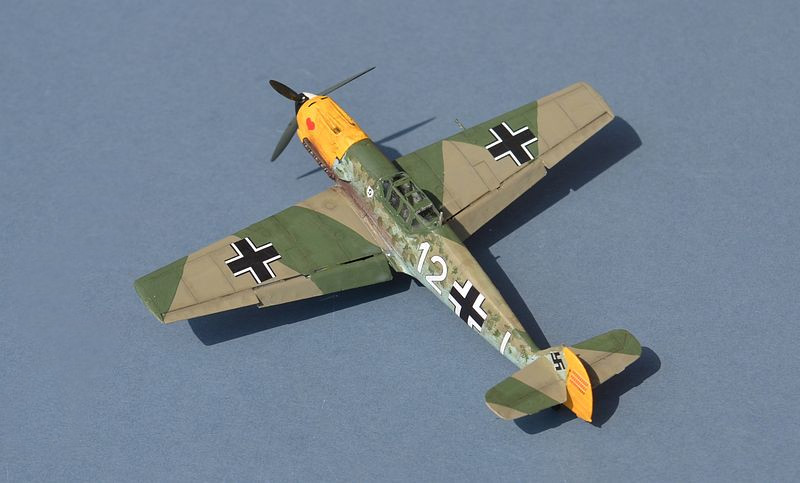
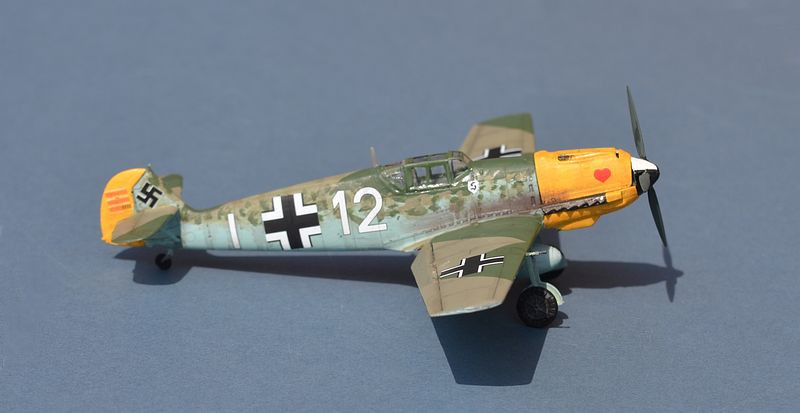
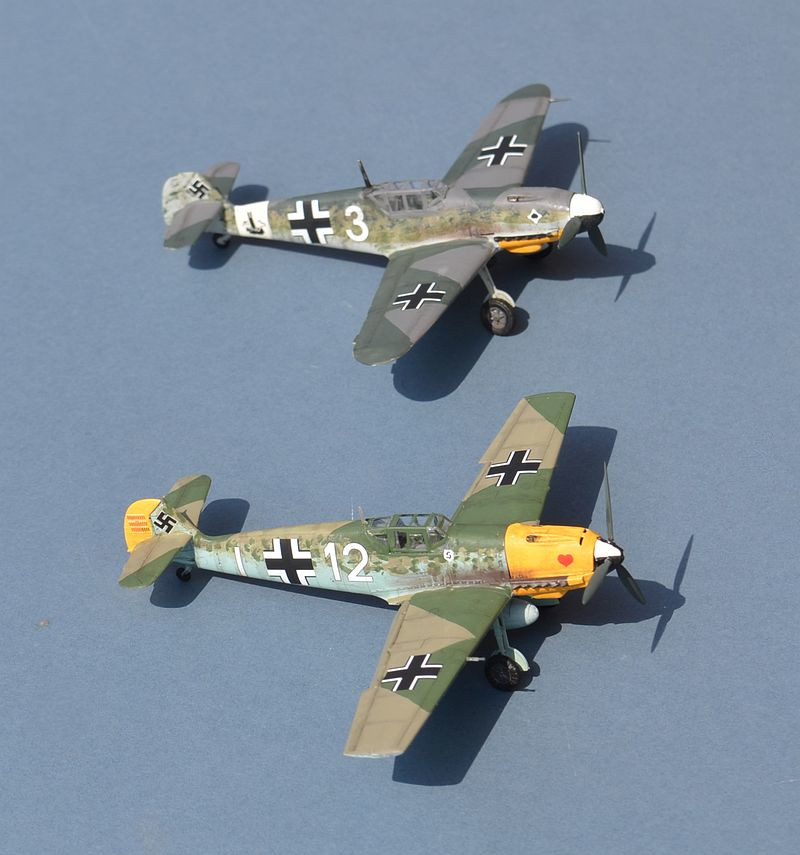
Below: this month’s two builds. Click the links below (or at the top of the page)
to see the second kit.














